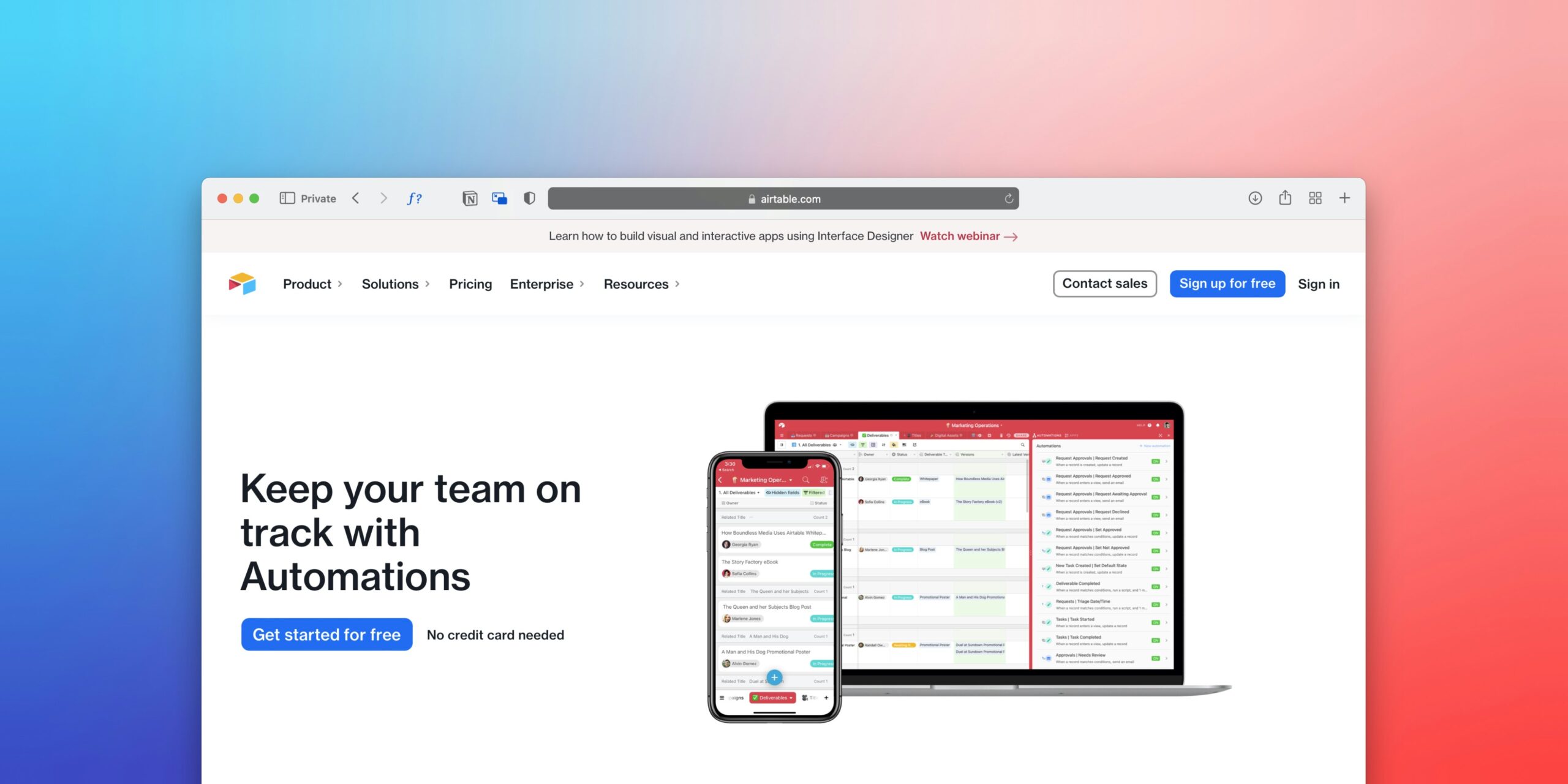If you’re looking to stay on top of your social media game, understanding how to track your performance is crucial. In today’s digital age, social media has become an essential platform for businesses and individuals alike to connect with their audience and drive engagement. However, without proper tracking, you may be missing out on valuable insights that can help optimize your social media strategy. So, whether you’re a seasoned social media marketer or just starting out, this article will provide you with practical tips and techniques to effectively track and measure your social media performance. Get ready to take your online presence to the next level!
Setting clear social media goals
Setting clear social media goals is essential for measuring and improving your social media performance. By defining your objectives, you give yourself a clear direction and purpose for your social media efforts. Whether you want to increase brand awareness, drive website traffic, or generate leads, each goal requires a different approach and measurement metrics.
Defining your objectives
Before you can track your social media performance, it’s crucial to define your objectives. Ask yourself what you want to achieve with your social media presence. Are you looking to increase the number of followers, generate leads, drive sales, or improve customer satisfaction? By clearly defining your objectives, you can create specific strategies and metrics to measure your progress.
Identifying your target audience
Once you’ve established your goals, it’s important to identify your target audience. Understanding your audience demographics, interests, and behavior will help you tailor your content and engagement strategies. By segmenting your target audience, you can track how different groups respond to your social media efforts and refine your strategies accordingly.
Choosing the right social media platforms
Not all social media platforms are created equal, and it’s important to choose the ones that align with your objectives and target audience. Each platform has its own strengths and audience characteristics that affect your reach and engagement. By selecting the right platforms, you can maximize your efforts and track performance on the platforms that matter most to your goals.
Determining key performance indicators (KPIs)
To effectively track your social media performance, you need to determine the key performance indicators (KPIs) that align with your goals. KPIs are specific metrics that indicate the success of your social media campaigns. Examples of KPIs could be the number of followers gained, engagement rates, click-through rates, or conversion rates. By setting measurable KPIs, you can track your progress and make data-driven decisions to optimize your social media strategy.
Utilizing social media analytics tools
Social media analytics tools provide valuable insights into your performance and audience behavior. By leveraging these tools, you can measure your reach, engagement, and conversion rates and identify areas for improvement.
Google Analytics
Google Analytics is a powerful tool that allows you to track website traffic and behavior. By creating UTM parameters and linking them to your social media posts, you can track the effectiveness of your social media efforts in driving traffic to your website. Google Analytics also provides valuable demographic data, conversion tracking, and insights into user behavior on your site.
Facebook Insights
For businesses that utilize Facebook as a social media platform, Facebook Insights provides valuable analytics and performance metrics. It allows you to track the engagement, reach, and demographics of your audience, as well as monitor the performance of your paid advertisements. By analyzing these insights, you can optimize your Facebook strategy and improve your performance.
Twitter Analytics
Twitter Analytics provides valuable data on your tweets, followers, and audience engagement. It offers insights into tweet impressions, reach, engagement rates, and follower growth. By understanding how your audience interacts with your tweets, you can refine your content strategy and increase your engagement levels.
Instagram Insights
Instagram Insights offers valuable analytics for businesses using Instagram as a marketing platform. It provides insights into your post engagement, reach, and follower demographics. By tracking your top-performing posts and understanding your audience’s preferences, you can optimize your Instagram strategy and drive better results.
LinkedIn Analytics
For professionals and B2B businesses, LinkedIn Analytics provides valuable insights into your LinkedIn performance. It offers metrics such as post views, impressions, engagement rates, and visitor demographics. By leveraging these insights, you can measure the effectiveness of your LinkedIn efforts and adjust your strategies accordingly.
Tracking engagement metrics
Engagement metrics are crucial for measuring how well your social media content resonates with your audience. By tracking metrics such as likes, comments, shares, and click-through rates, you can gauge the effectiveness of your content and fine-tune your strategy.
Measuring likes, comments, and shares
Likes, comments, and shares are key indicators of how well your audience is engaging with your social media content. These metrics provide insight into the popularity and resonance of your posts. By monitoring likes, comments, and shares, you can identify which types of content are most effective at driving engagement and adjust your content strategy accordingly.
Monitoring click-through rates (CTR)
Click-through rates measure the effectiveness of your call-to-action and the number of users who click on your links. By tracking the CTR of your social media posts, you can assess how well your content is driving traffic to your website or landing page. By optimizing your call-to-action and analyzing CTR, you can improve your conversion rates and maximize the ROI of your social media efforts.
Analyzing reach and impressions
Reach and impressions reflect the number of unique users who see your social media posts. By monitoring these metrics, you can gauge how well your content is reaching your target audience. It also provides valuable insights into the visibility and effectiveness of your social media campaigns.
Evaluating social media mentions
Social media mentions are instances where your brand or business is mentioned by other users on social media platforms. By monitoring these mentions, you can gain valuable insights into brand sentiment, customer feedback, and industry trends. Engaging with positive mentions and addressing negative ones can help you strengthen your brand reputation and build positive relationships with your audience.
Tracking follower growth
Follower growth is an important metric for measuring the growth and reach of your social media presence. By tracking the number of followers gained over time, you can assess the effectiveness of your content, engagement strategies, and overall brand awareness. Monitoring follower growth allows you to identify trends and adjust your social media tactics to attract and retain a larger audience.
Monitoring website traffic
Tracking website traffic from your social media efforts is essential for measuring the effectiveness of your social media strategies in driving users to your website. By utilizing UTM parameters, URL shorteners, and conversion tracking, you can accurately track the traffic generated from your social media campaigns.
Using UTM parameters
UTM parameters are tags added to your URLs that allow you to track the source and effectiveness of your website traffic. By using UTM parameters, you can identify which social media platforms, campaigns, or specific posts are driving the most traffic to your website. This data is crucial for measuring the ROI of your social media efforts and optimizing your strategies.
Leveraging URL shorteners
URL shorteners provide a compact and trackable link to your website. By using URL shorteners, you can create customized links for your social media posts and track the click-through rates. This allows you to measure the effectiveness of your social media content in driving traffic to your website.
Setting up conversion tracking
Conversion tracking involves tracking specific actions taken by users on your website, such as form submissions, purchases, or newsletter sign-ups. By setting up conversion tracking, you can measure how many social media visitors complete these desired actions, helping you understand the impact of your social media efforts on your business goals.
Analyzing referral traffic
Referral traffic measures the number of users who reach your website from external sources, including social media platforms. By analyzing referral traffic, you can determine which social media platforms or campaigns are generating the most traffic to your website. This information is invaluable for optimizing your social media strategies and focusing your efforts on the platforms that yield the best results.
Measuring social media conversion
Tracking social media conversions allows you to measure how many users complete specific actions as a result of your social media efforts. By setting conversion goals, implementing tracking pixels, and analyzing conversion rates and return on investment (ROI), you can assess the effectiveness of your social media campaigns in driving meaningful results.
Defining conversion goals
Conversion goals are specific actions you want users to take on your website, such as making a purchase, filling out a form, or signing up for a newsletter. By clearly defining your conversion goals, you can set measurable metrics and track the number of conversions generated from your social media campaigns.
Implementing conversion tracking pixels
Conversion tracking pixels are snippets of code placed on your website that track specific actions taken by users. By implementing conversion tracking pixels, you can track social media users’ behavior on your website and measure how well your social media efforts are driving conversions. This data allows you to optimize your campaigns and increase your conversion rates.
Analyzing conversion rates
Conversion rates reflect the percentage of users who complete a desired action out of the total number of social media users. By analyzing conversion rates, you can assess the effectiveness of your social media campaigns in driving conversions. This information allows you to identify areas for improvement and make data-driven decisions to optimize your social media strategies.
Calculating return on investment (ROI)
Return on investment (ROI) measures the financial impact of your social media campaigns by comparing the cost of your campaigns to the revenue they generate. By calculating ROI, you can determine the profitability of your social media efforts and allocate your resources effectively. This data helps you optimize your strategies and make informed decisions to maximize your return on investment.
Tracking social media mentions and sentiment
Monitoring social media mentions and sentiment allows you to understand the perception of your brand, identify potential issues, and engage with your audience effectively. By actively monitoring brand mentions, utilizing sentiment analysis, and utilizing social listening tools, you can stay on top of conversations about your brand and make informed decisions to improve your social media strategies.
Monitoring brand mentions
Brand mentions are instances where other users mention your brand or business on social media platforms. By actively monitoring brand mentions, you can gain valuable insights into how your audience perceives your brand. Positive brand mentions can be an opportunity for engagement and relationship-building, while negative mentions can be addressed promptly to resolve issues and improve customer satisfaction.
Analyzing sentiment analysis
Sentiment analysis involves analyzing social media mentions or comments to determine the sentiment (positive, negative, or neutral) associated with them. By employing sentiment analysis, you can understand the overall sentiment towards your brand and evaluate the effectiveness of your social media efforts in shaping brand perception. This information allows you to take proactive steps to address negative sentiment and amplify positive sentiment.
Utilizing social listening tools
Social listening tools enable you to monitor and analyze social media conversations around specific keywords, topics, or brands. By utilizing social listening tools, you can gain insights into industry trends, monitor competitor mentions, and identify opportunities to engage with your target audience. This data helps you understand the needs and preferences of your audience and make informed decisions to improve your social media strategies.
Tracking competitor mentions
Tracking competitor mentions allows you to understand how your competitors are perceived and how they engage with their audience. By monitoring competitor mentions, you can identify gaps in their strategies, learn from their successes and failures, and differentiate your brand. This information helps you refine your social media tactics and gain a competitive advantage in the market.
Analyzing audience demographics
Understanding your audience demographics is essential for tailoring your social media content and engagement strategies. By analyzing age and gender demographics, geographic location, interests, and behavior, you can segment and target your audience effectively, improving your engagement levels and overall performance.
Understanding your audience
Before diving into demographic analysis, it’s important to have a clear understanding of your target audience. By defining your target audience’s characteristics, preferences, and pain points, you can create content that resonates and engages effectively.
Analyzing age and gender demographics
Age and gender demographics provide insights into the composition of your audience. By analyzing age and gender demographics, you can adapt your content and messaging to cater to different age groups and genders. This segmentation allows you to tailor your strategies and improve your engagement rates.
Evaluating geographic location
Geographic location analysis allows you to understand where your audience is located. This information is valuable for targeting specific regions, localizing your content, and identifying potential market opportunities. By evaluating geographic location, you can refine your targeting efforts and optimize your social media strategies accordingly.
Assessing interests and behavior
Analyzing audience interests and behavior provides insights into your audience’s preferences, hobbies, and activities. By identifying common interests and behavior patterns, you can create content that aligns with your audience’s interests and engages them effectively. This data allows you to optimize your social media strategies and foster stronger connections with your target audience.
Monitoring customer engagement
Monitoring customer engagement is crucial for building relationships, addressing inquiries, managing feedback, and gauging customer sentiment. By tracking customer comments and messages, responding promptly, managing feedback effectively, and monitoring sentiment, you can create a positive customer experience and strengthen brand loyalty.
Tracking customer comments and messages
Tracking customer comments and messages allows you to stay connected with your audience and address their inquiries or concerns promptly. By monitoring and responding to comments and messages, you can foster engagement, build relationships, and provide exceptional customer service. This interactive approach helps you establish a strong brand presence and cultivate a loyal customer base.
Responding to customer inquiries
Responding promptly to customer inquiries is essential for maintaining good customer relations. By addressing inquiries in a timely and helpful manner, you demonstrate your commitment to customer satisfaction and establish yourself as a reliable and trustworthy brand. This proactive approach builds customer trust and loyalty.
Managing customer feedback
Customer feedback provides valuable insights into the strengths and weaknesses of your products, services, and overall customer experience. By actively managing customer feedback, you can identify areas for improvement, address issues promptly, and make data-driven decisions. This feedback-driven approach helps you build a customer-centric brand and deliver exceptional experiences.
Monitoring customer sentiment
Monitoring customer sentiment allows you to gauge how your audience feels about your brand, products, or services. By tracking sentiment, you can identify areas where customers have positive experiences and areas that need improvement. This information helps you align your strategies with customer expectations and enhance overall satisfaction.
Evaluating social media advertising performance
Social media advertising plays a significant role in reaching your target audience and driving conversions. By evaluating ad reach and impressions, analyzing click-through rates (CTR), calculating cost per click (CPC), and evaluating return on ad spend (ROAS), you can measure the effectiveness of your social media advertising campaigns and optimize your strategies.
Assessing ad reach and impressions
Ad reach refers to the number of unique users who see your social media advertisements, while impressions represent the total number of times your ads are displayed. By assessing ad reach and impressions, you can evaluate the visibility and exposure of your ads. This data helps you refine your targeting efforts and maximize the reach of your social media advertising campaigns.
Analyzing click-through rates (CTR)
Click-through rates (CTR) measure the percentage of users who click on your social media advertisements. By analyzing CTR, you can assess the effectiveness of your ad copy, visuals, and call-to-action. This data allows you to optimize your ad content and increase the likelihood of conversions.
Calculating cost per click (CPC)
Cost per click (CPC) measures the average amount you pay for each click on your social media advertisements. By calculating CPC, you can evaluate the cost-effectiveness of your ad campaigns and allocate your budget efficiently. This data helps you maximize your ad spend and minimize costs.
Evaluating return on ad spend (ROAS)
Return on ad spend (ROAS) measures the revenue generated from your social media advertising campaigns compared to the money spent on those campaigns. By evaluating ROAS, you can determine the profitability and effectiveness of your ad campaigns. This data helps you make informed decisions to optimize your ad strategies and improve your return on investment.
Optimizing social media strategy
Optimizing your social media strategy is an ongoing process that requires continuous analysis and adaptation. By identifying top-performing content, adapting to audience preferences, optimizing posting times, and experimenting with different formats, you can refine your strategies and improve your social media performance.
Identifying top-performing content
Identifying top-performing content allows you to understand what resonates with your audience and drives engagement. By analyzing metrics such as likes, shares, comments, and click-through rates, you can identify patterns and themes that contribute to the success of your content. This data helps you create more of what your audience loves and increase your overall engagement levels.
Adapting to audience preferences
Audience preferences may evolve over time, so it’s crucial to stay updated and adapt your strategies accordingly. By monitoring audience demographics, engagement metrics, and feedback, you can identify shifts in preferences and adjust your content, tone, and messaging to better align with your audience’s needs. This flexibility ensures that your social media strategy remains relevant and effective.
Optimizing posting times
Posting times play a significant role in reaching and engaging your audience effectively. By analyzing engagement metrics and audience behavior, you can determine the optimal times for posting your content on each social media platform. This strategic timing improves the visibility and effectiveness of your posts and increases the likelihood of engagement.
Experimenting with different formats
Social media platforms offer various content formats, such as images, videos, infographics, and live videos. By experimenting with different formats, you can diversify your content and capture your audience’s attention in different ways. This experimentation allows you to discover what resonates with your audience and optimize your content strategy to deliver maximum impact.
In conclusion, tracking social media performance is crucial for understanding the effectiveness of your strategies, optimizing your efforts, and achieving your goals. By setting clear objectives, utilizing social media analytics tools, tracking engagement metrics, monitoring website traffic, measuring social media conversion, tracking mentions and sentiment, analyzing audience demographics, monitoring customer engagement, evaluating advertising performance, and optimizing your social media strategy, you can continuously improve your social media performance and drive meaningful results for your business.












![6 Steps to Create an Outstanding Marketing Plan [Free Templates] 6-steps-to-create-an-outstanding-marketing-plan-[free-templates]](https://socialmediamarketingtechniques.com/wp-content/uploads/2024/07/512-6-steps-to-create-an-outstanding-marketing-plan-free-templates-100x75.webp)

